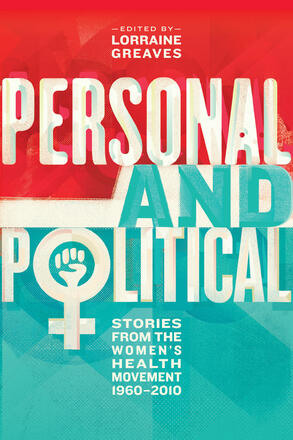
Personal and Political
Stories from the Women's Health Movement 1960–2010
How feminism transformed the healthcare system in Canada
Description
Women’s Health expert Lorraine Greaves details the innovative, courageous, and creative activism of the “second wave” women’s health movement in Canada between 1960 and 2010. This activism (re)claimed women’s bodies, created women-centered spaces and services, and challenged the medical model. Feminists challenged diagnoses, treatments, laws, policies and research, as well as the care women were offered and the way they saw their bodies and themselves. Legions of women, and a few men, made changes ranging from abortion rights to preserving women’s hospitals, to the legalization of midwifery to requiring gendered health research—changes that resonate today.